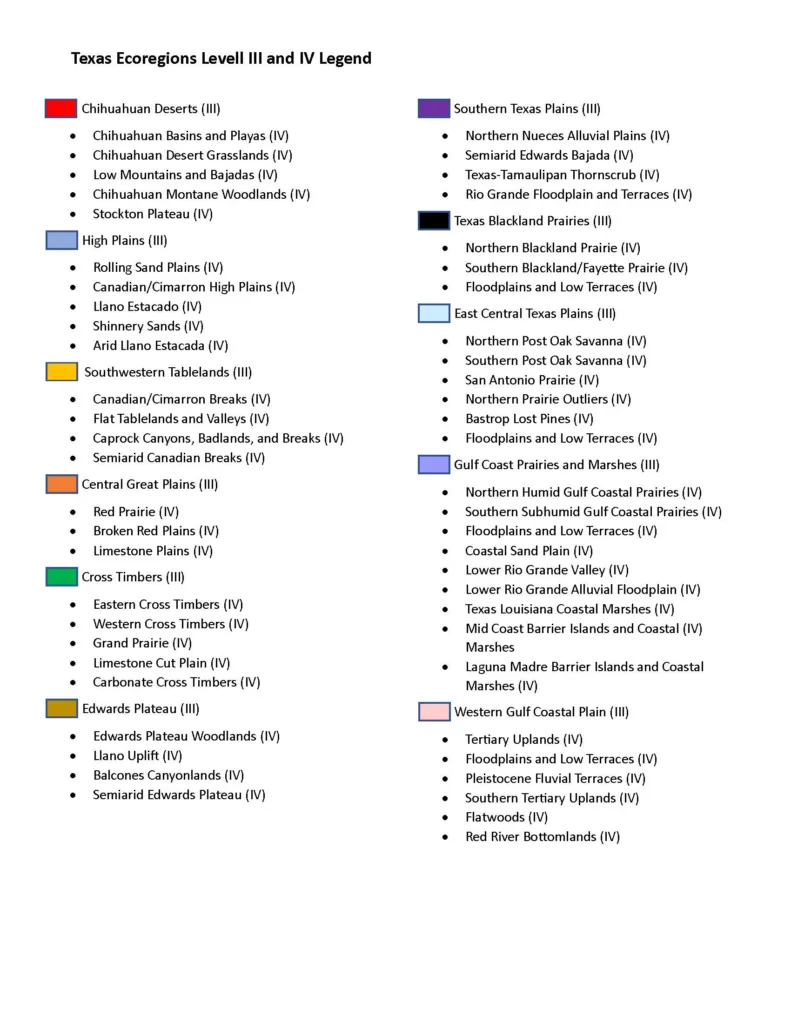Home » Resources » Why Native Plants? » Ecoregion Map
Texas, with its vast expanse covering 266,807 square miles, ranks second only to Alaska in land area. Its sheer size and geographical location contribute to an impressive diversity in climate and landscapes, shaping a rich mosaic of habitats. This state includes, deserts, forests, mountains, marshes, prairies, plains, riparian areas, and more.
Located at a crossroads, Texas is where eastern habitats meet western ones, and southern subtropical zones blend into northern temperate regions. The state’s annual rainfall varies dramatically—from as little as 8 inches in the arid deserts of far west Texas to a lush 56 inches per year in the swamps of east Texas.
Ecoregions are geographic areas that have similarities in the type, quality, and quantity of environmental resources. These regions are primarily defined by factors such as soil types, average rainfall, and temperature ranges. Ecoregion frameworks serve as invaluable tools for environmental research, assessment, management, and ecosystem monitoring. They are instrumental in setting resource management goals, developing biological criteria, and establishing water quality standards.
By recognizing the unique characteristics of their specific ecoregion, homeowners can select native plants that are best suited to the local soil, climate, and rainfall patterns. This not only ensures healthier plants that require less maintenance and resources, but also supports local wildlife, including pollinators like bees and butterflies.
How to Use Map
The map references USDA and Texas Parks & Wildlife ecoregion borders
